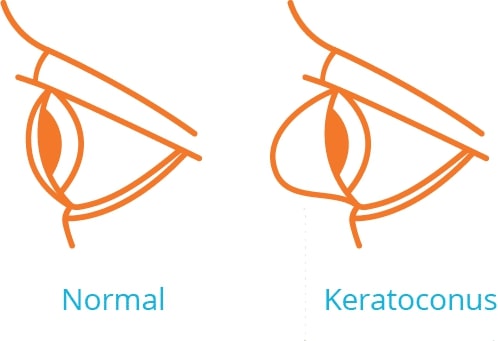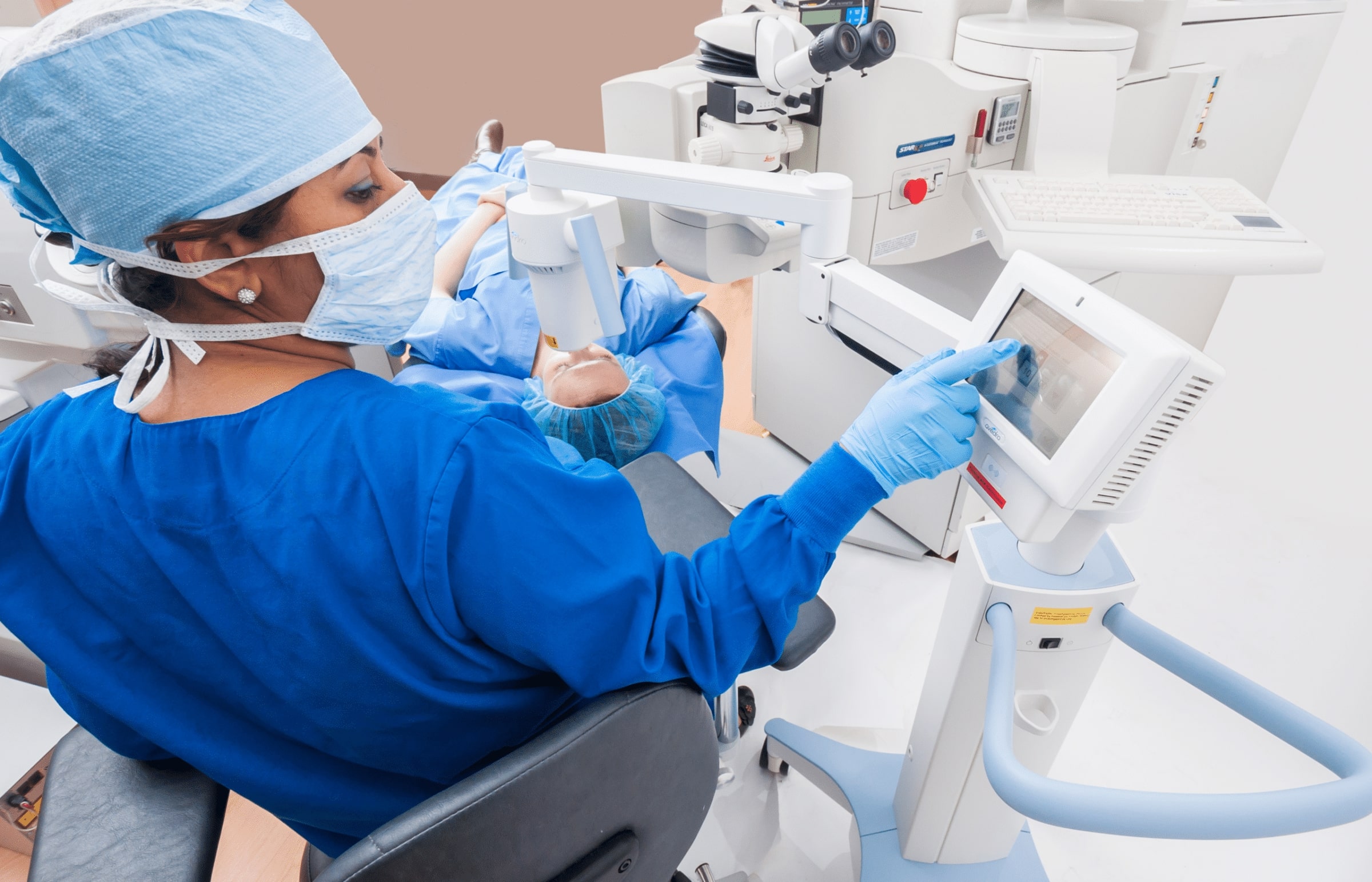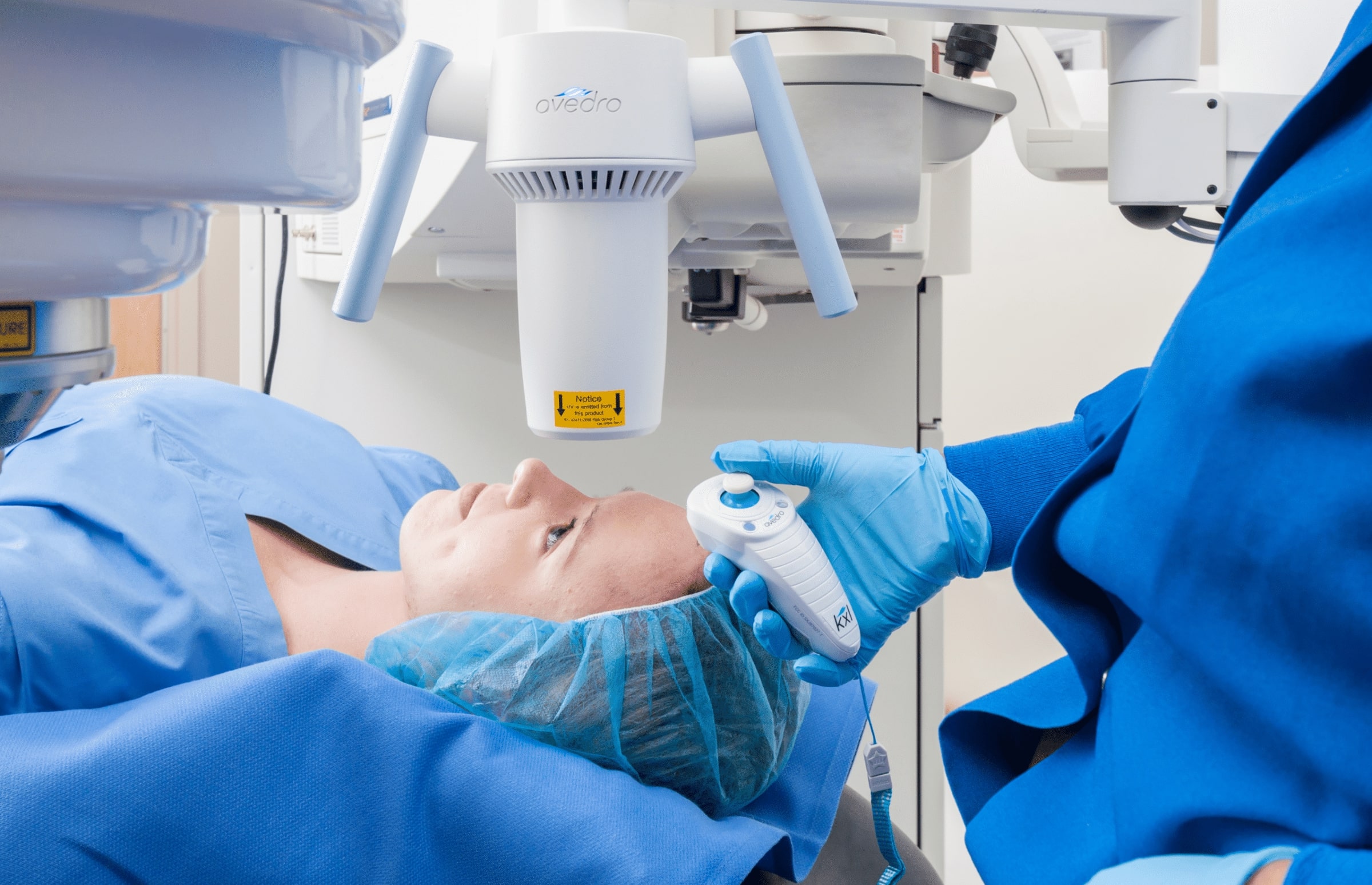What is keratoconus?
Keratoconus, often referred to as ‘KC’, is a non-inflammatory eye condition in which the typically round dome-shaped cornea progressively thins and weakens, causing the development of a cone-like bulge and optical irregularity of the cornea. This causes ‘distortion’ in your vision and can result in significant visual impairment.
Learn more about KC and corneal cross-linking in this short video.

The Symptoms of Keratoconus
Keratoconus typically first appears in individuals who are in their late teens or early twenties, and may progress for 10-20 years, and then slow or stabilize. Each eye may be affected differently. In the early stages of keratoconus, someone may experience:
- Slight blurring of vision
- Distortion of vision
- Increased sensitivity to light
Your cornea is responsible for focusing most of the light that comes into your eye. Therefore, keratoconus or other abnormalities of the cornea can have a major impact on your vision, making simple tasks such as driving or reading very difficult.1
In severe cases, keratoconus may result in significant loss of vision, and may lead to corneal transplant.
What is corneal ectasia?
Corneal ectasia or keratectasia, also marked by progressive corneal steepening and thinning, is a rare but serious complication that infrequently follows vision correction procedures—such as laser-assisted in-situ keratomileusis (LASIK) and photorefractive keratectomy (PRK). It is also associated with worsening vision.
What is corneal cross-linking?
Available at Richens Eye Center, corneal cross-linking is a minimally-invasive outpatient procedure that combines the use of UVA light and riboflavin eye drops to add stiffness to the corneal structure which have been weakened by disease, or by rare complications after refractive surgery (called corneal ectasia or keratectasia).
Cross-linking has been performed in Europe since 2003, and is now FDA-approved. This procedure is considered the standard of care around the world for keratoconus and corneal ectasia following refractive surgery2.
Corneal Cross-Linking3

- Creates new corneal collagen cross-links
- Results in a shortening and thickening of the collagen fibrils
- Leads to the stiffening of the cornea
Patient Testimonials
"I was thoroughly impressed with Dr. Richens. She was everything one could hope for in a medical professional: attentive, thorough, professional, and a very skilled communicator. She took the time to listen and diagnose in a way that gave me confidence."
"Dr. Richens is amazing! Very professional and very knowledgeable. She is very caring and thoughtful. Gorgeous inside and out! My mom had an emergency and Dr. Sharon Richens made sure that she was in good hands. Thank you so much for recommending Dr. Marcos Reyes. He is amazing! Her surgery was successful. Love Richens Eye Center, St. George Eye Center and St. George Surgical Center! Thanks to all medical professionals who helped us!"
Riboflavin
Riboflavin (vitamin B2) is important for body growth, red blood cell production, and assists in releasing energy from carbohydrates. Its food sources include dairy products, eggs, green leafy vegetables, lean meats, legumes, and nuts. Breads and cereals are often fortified with riboflavin.
Under the conditions used for corneal collagen cross-linking, riboflavin 5’- phosphate, vitamin B2, functions as a photo enhancer, which enables the cross-linking reaction to occur.
Ultra-Violet A (UVA)
UVA is one of the three types of invisible light rays given off by the sun (together with ultra-violet B and ultra-violet C) and is the weakest of the three.
A UV light source is applied to irradiate the cornea after it has been soaked in the photo enhancing riboflavin solution. This cross-linking process stiffens the cornea by increasing the number of molecular bonds, or cross-links, in the collagen.

How to know Cross-Linking is right for you
Patients over the age of 14 who have been diagnosed with progressive keratoconus or corneal ectasia should ask their doctor about corneal cross-linking.
We are proud to offer patients in our practice the only therapeutic products for corneal cross-linking which have been FDA approved to treat progressive keratoconus. This approval offers an effective treatment for patients who, until recently, had no therapeutic options to limit the progression of this sight-threatening disease.
To learn more about keratoconus and the iLink cross-linking procedure visit, GlaukosiLink.com.
Schedule a Consultation Today!
If you're interested in getting keratoconus treatment, or if you wish to learn more about the procedure, book an appointment with an accomplished physician at Richens Eye Center today. You can find the contact information for each of our three offices, as well as our email contact form, by clicking here. We look forward to serving you.
- National Keratoconus Foundation
- Gomes, José A. P., Donald Tan, Christopher J. Rapuano, Michael W. Belin, Renato Ambrósio, José L. Guell, François Malecaze, Kohji Nishida, and Virender S. Sangwan. “Global Consensus on Keratoconus and Ectatic Diseases.” Cornea 34.4 (2015): 359-69. Web.
- Beshwati IM, O’Donnell C, Radhakrishnan H Biomechanical properties of corneal tissue after ultraviolet-A- riboflavin crosslinking. J Cataract Refract Surg. 2013;39(3):451-62. Doi:10.1016/j.jcrs.2013.01.026.

